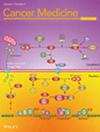One-Step Nucleic Acid Amplification Analysis of Sentinel Lymphatic Nodes in Endometrial Cancer Patients (EU-OSNA): A European Multicenter Diagnostic Accuracy Study
Abstract
Objective
This European multicenter study aimed to assess the diagnostic accuracy of one-step nucleic acid amplification (OSNA) as the primary endpoint by comparing this method with ultrastaging for the detection of sentinel node metastases in endometrial cancer patients.
Methods
European multicenter prospective performance study including data from 10 centers across 5 European countries. Each node, upon removal of surrounding adipose tissue, was sliced in 2 mm thick sections and equally distributed between ultrastaging and OSNA. OSNA is based on cytokeratin-19 detection, serving as a metastatic marker. Sensitivity, specificity, and concordance of OSNA versus ultrastaging were calculated at nodal and patient levels.
Results
Seven hundred forty-three sentinel nodes from 366 patients were evaluated. Compared to ultrastaging, OSNA showed concordance, specificity, and sensitivity of 95%, 97.6%, and 41.2% at the nodal level and 93.2%, 96.2%, and 47.8% at the patient level, respectively. In reverse analysis, when compared to OSNA, the ultrastaging showed a sensitivity of 45.2% and 45.8% at the nodal and patient levels, respectively. Irrespective of the size of metastasis, both methods agreed in 14 positive and 692 negative nodes (95%). This resulted in 24 (6.56%) patients with a positive OSNA and 23 (6.28%) patients with a positive ultrastaging finding. The number of discordant nodes was 47 (6.33%), 40 (85.1%) of them were micrometastases. Benign epithelial inclusions occurred in 4 nodes (0.54%) and 4 patients (1.09%).
Conclusion
Compared with ultrastaging, OSNA showed high concordance and specificity, but sensitivity was low—similar to ultrastaging compared with OSNA as an index test in reverse analysis. The main limitation in comparing the two approaches by splitting the sentinel nodes was the tissue allocation bias. As reflected in the number of discordant cases, especially at the micrometastases level. The distribution of patients with node metastases was comparable between the two methods at both the nodal and patient levels.
Trial Registration
German Clinical Trial Register: Nr. DRKS00021520


 求助内容:
求助内容: 应助结果提醒方式:
应助结果提醒方式:


